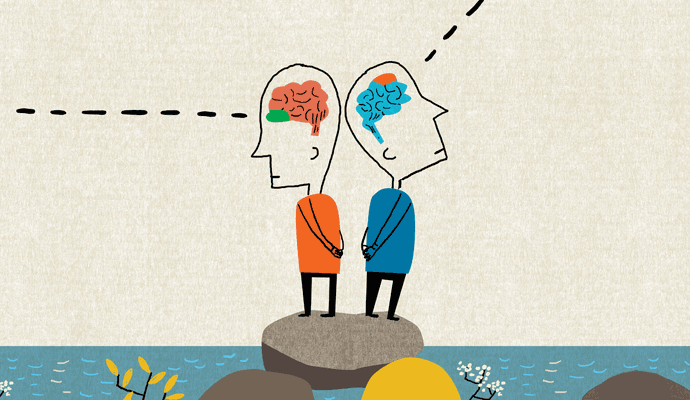The Keys to Leadership: Your Brain and My Grandmother
A new year should herald new ways of thinking about business.
(originally published by Booz & Company)This article was originally published by Booz & Company
I’m often asked to recommend books on leadership. Increasingly, I’ve been steering people away from what could be called a typical leadership book: a memoir by a CEO or a military officer, or the latest “Nine Essential Qualities of a Leading Leader” type. As entertaining as those kinds of books may be, few have anything new to say that’s really useful to a person who wants to improve his or her ability to lead. Instead, I direct people to the rapidly evolving literature on brain science, where I tend to find some fascinating ideas that apply to business.
In 2013, the standouts from my own reading list included books that cover a mix of physiology and psychology—namely, Daniel Kahneman’s Thinking, Fast and Slow , David Eagleman’s Incognito: The Secret Lives of the Brain , Srini Pillay’s Your Brain and Business: The Neuroscience of Great Leaders , Maria Konnikova’s Mastermind: How to Think Like Sherlock Holmes, and Mahzarin Banaji and Anthony Greenwald’s Blindspot: Hidden Biases of Good People. What I find particularly interesting is how much of the recent, cutting-edge research on the human brain actually confirms six insights that my grandmother shared with me years ago.
Cutting-edge research on the brain actually confirms insights from my grandmother.
Don’t judge a book by its cover. The mind is a natural categorization machine—once certain attributes have been assigned to a category, they are difficult to remove. Our brains are full of hidden biases and stereotypes. In Blindspot, for instance, Banaji and Greenwald cite several instances of implicit association tests showing that people of color have more negative views of other people of color than they do of whites, and that gays and lesbians have more negative views of other LGBT people than they do of straight people. In a different test, people were shown a photograph of a random person and asked if the person seemed nice. Most people answered quickly, with no real evidence on which to base a judgment. Banaji and Greenwald show that it’s possible to default to stereotypes even while denying their validity. Will alone is insufficient to overcome these innate biases—it takes work.
Take a walk to clear your head. If you’re stressed or facing a critical decision, get out of your office! Konnikova cites research that reveals that spending as little as 10 minutes observing nature can help you relax and focus the mind. Even concentrating on a photograph of nature can help. There’s wisdom in taking time for a regular stroll at lunch. In Your Brain and Business, Pillay cites studies showing that physical movement can have a profound effect on how you think: Getting into a box-like structure and then stepping out of it actually improves your ability to get creative and think “outside the box,” so don’t expect your next big idea to come during the hours you spend in a conference room. It’s one more reason to get out of your chair and move.
You win some, you lose some. I have a friend who worked for a high-end apparel retailer, which measured her ability to sell additional products to every single customer. She joked that selling nothing was OK, but letting someone leave with only a single garment earned a demerit. That’s exactly the wrong way to induce high productivity, according to research cited by Kahneman in Thinking, Fast and Slow. You actually get better outcomes for decisions you face repeatedly when you approach them as a portfolio rather than individually. When you focus on individual wins and losses, you become more likely to take or avoid risks at the wrong times. It’s better to think like a stock trader—accepting some losses as inevitable and measuring overall performance to determine success—which stimulates better decision making. Looking at the ratio of single-item to multi-item sales over a week or a month would have given the retailer a better sense of which associates were adept at knowing when to push and when to hold back with a customer.
Let me sit with that for a bit. Just because you aren’t doing something, it doesn’t mean that your brain isn’t working. In Mastermind, Konnikova argues for the power of contemplation: She notes Sherlock Holmes’ description of a particularly thorny conundrum as a “three-pipe problem.” The brain between our ears is the ultimate supercomputer—sometimes we need to pause to let it sort through information, find patterns, and focus. While you may or may not want to indulge in tobacco, it really does pay to put down your smartphone, to just sit and reflect. If you need structure, journaling can be an effective way to build quiet time into your daily schedule.
When you can’t decide, flip a coin. We all wrestle with decisions, particularly when the available data doesn’t point to a clear way forward. One job candidate has better credentials, but another overflows with innovative ideas and great questions. Which do you choose? According to David Eagleman in Incognito, a simple coin flip may help. This doesn’t mean putting your faith in luck. When you flip the coin, pay close attention to your reaction: If you’re relieved at the side that lands up, you’re likely confirming what your unconscious mind was trying to tell you all along. If you long for a do-over, your inner mind wants to steer you toward the other choice.
It’s nice to be important, but it’s important to be nice. Research cited by David Rock in strategy+business in 2009 shows that the brain processes social pain in similar ways to physical pain. A psychologically stressful workplace can kill productivity, creative problem solving, and innovative thinking. Creating social safety doesn’t mean being a pushover, but it does mean making sure the work place is fair, transparent, and inclusive.
As we enter the new year, those aspiring to lead would do well to start thinking in new ways. Set aside the usual choices on the bookshelf and dive into the latest studies on the brain. It turns out that some tried and true pieces of wisdom are tried and true for good reasons.





